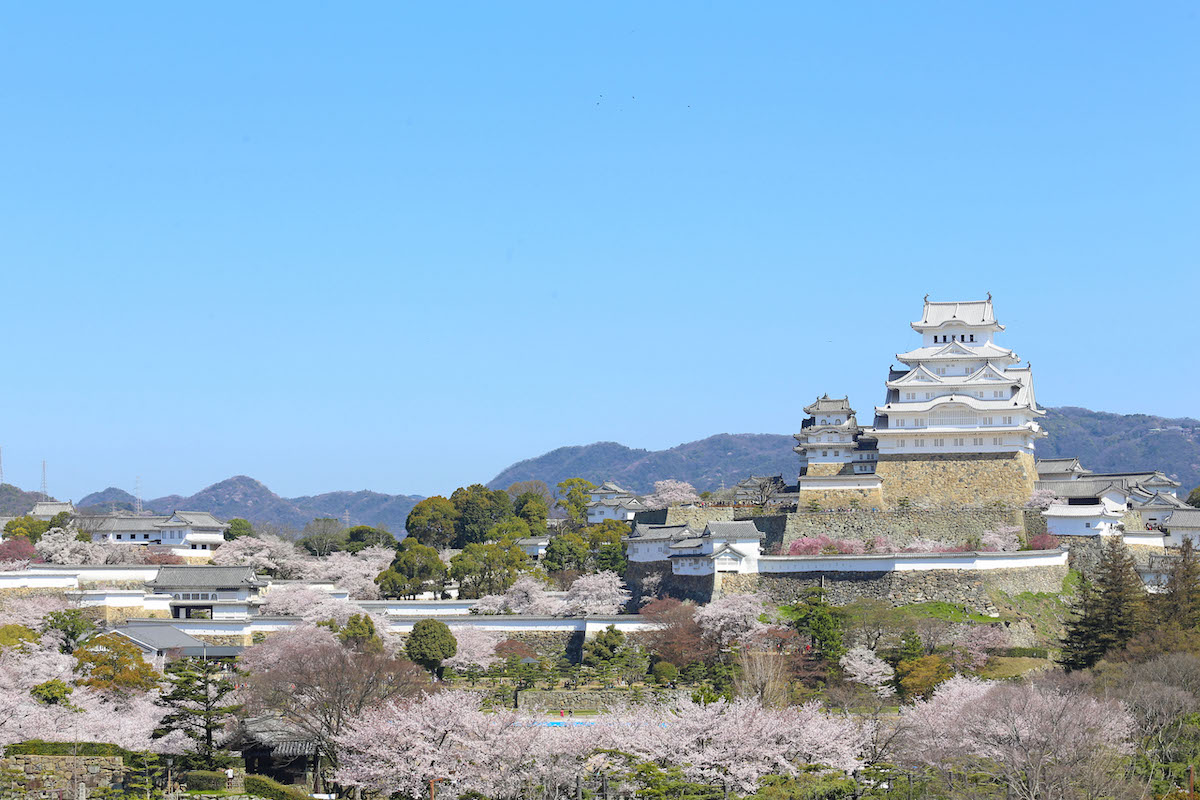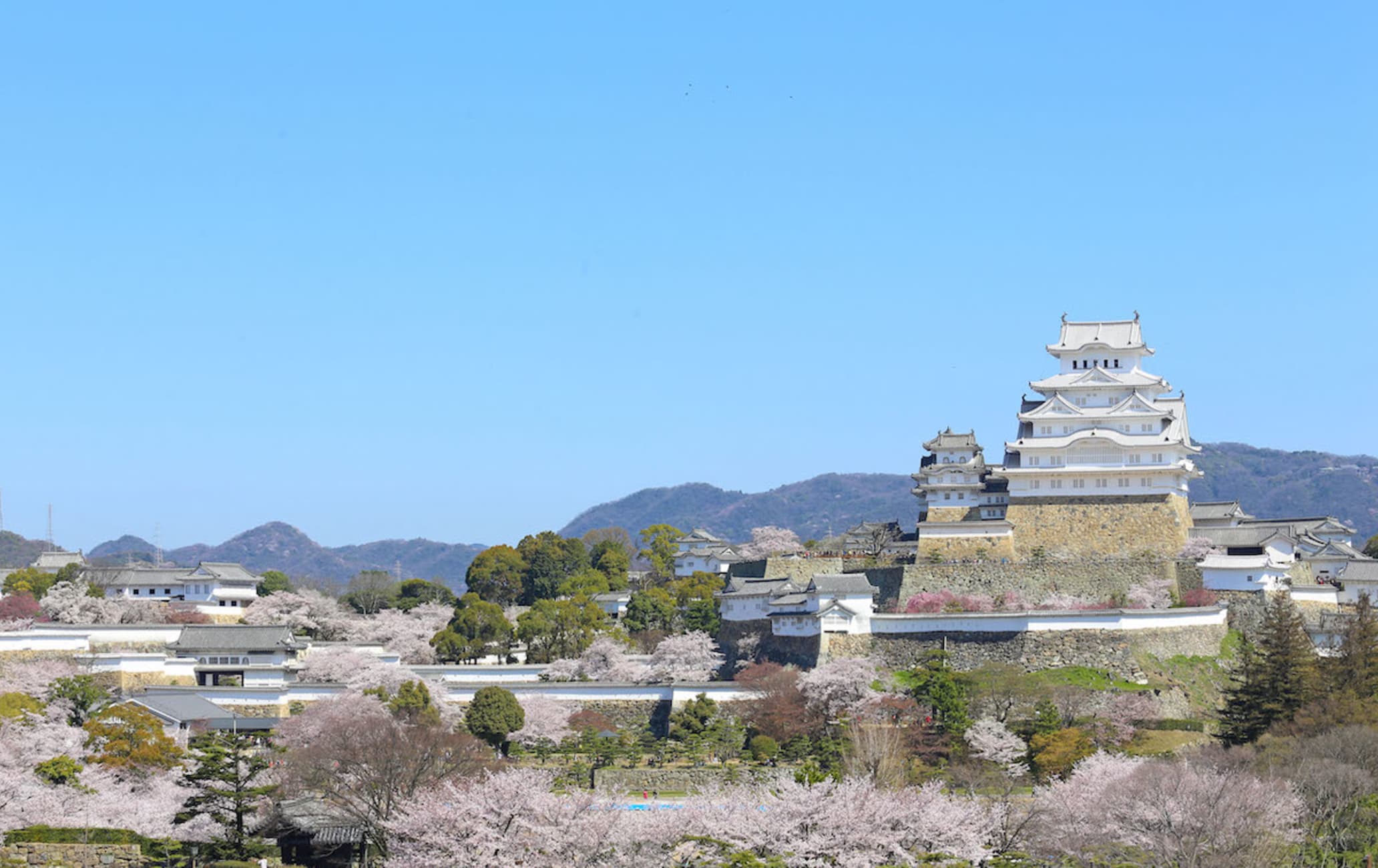The best-preserved castle in Japan
Himeji Castle is also known as the White Heron Castle and is both a Japanese National Treasure and a World Heritage site. Its status as one of Japan's 12 remaining original castles makes this fortress a must for anyone interested the history of Japan.
Don't Miss
- More than 1,000 cherry trees in the castle's grounds that bloom each spring
- The 400-year-old, seven-story castle keep
- The Edo period-style Kokoen Garden that beautifully encapsulates Japan's changing seasons
How to Get There
Himeji Castle is one kilometer down Otemae-dori street from the north exit of Himeji Station. The castle can be reached in a 15-to-20-minute walk or a five-minute bus ride from the station.

600 years of history
Himeji Castle dates back over 600 years. Chosen as a strategic defense point to the west of Kyoto, the first set of fortifications was built sometime in the 1400s. The present castle complex was completed in 1609 under the supervision of daimyo Lord Ikeda Terumasa and is made up of over 80 buildings connected by a series of labyrinth-like winding paths.
Free to enter up to a point
Otemon Gate is the main gate into Himeji Castle, and allows access to the admission-free part of the castle—the tertiary outer bailey known as San-no-maru. This part of the castle has a wide lawn with a number of cherry trees and is popular in spring for cherry blossom picnics.
The main keep
Through the Hishi Gate is the paid portion of the castle. After buying a ticket (1,000 yen) from the ticket booth near the gate, visitors can enter the narrow lanes of the inner castle and walk up to the six-story main keep.


It is possible to climb the keep to the top floor. The floors get progressively smaller as you ascend and are sparsely furnished aside from a few signs explaining the most important architectural and defensive features of the castle.
On the top floor of the castle is a small shrine and viewpoints that allow visitors to look over Himeji Castle and outwards to the city.
Within the paid area of the castle, it is also possible to visit the west bailey—the Nishi-no-maru—which has great views of the main keep.
Cherry blossoms
Over 1,000 cherry trees can be found in the castle's grounds. The blossoms are free to see in the outer grounds, but a fee is required if you'd like to see the inner castle grounds' blooms.

While the castle is arguably at its best during sakura cherry blossom season, it is also at its most crowded. Hundreds of locals and tourists descend upon the castle for picnics and to take photos of the blossoms.
If you are not a fan of huge crowds and want to see the castle more peacefully, it is perhaps best avoided during peak blossom season. Tickets to enter the main keep of the castle may also be limited during this period.
Himeji Castle Garden
Kokoen is a Japanese garden next to Himeji Castle. It consists of nine separate walled gardens designed in various styles of the Edo period. The gardens were opened in 1992 to commemorate the centenary of Himeji City .


Boat rides
Only one of Himeji's three original moats survives intact to this day. Known as goku-bori, or the inner moat, it is possible to take a boat ride along the moat if you visit the castle on Saturdays, Sundays or public holidays. The rides cost 1,000 yen, and there are usually 10 rides per day. To access the moat, you must first go through Hishi gate.
Recently restored
After a five-year project that started in 2010, Himeji Castle was fully reopened to the public on March 27, 2015.

























































